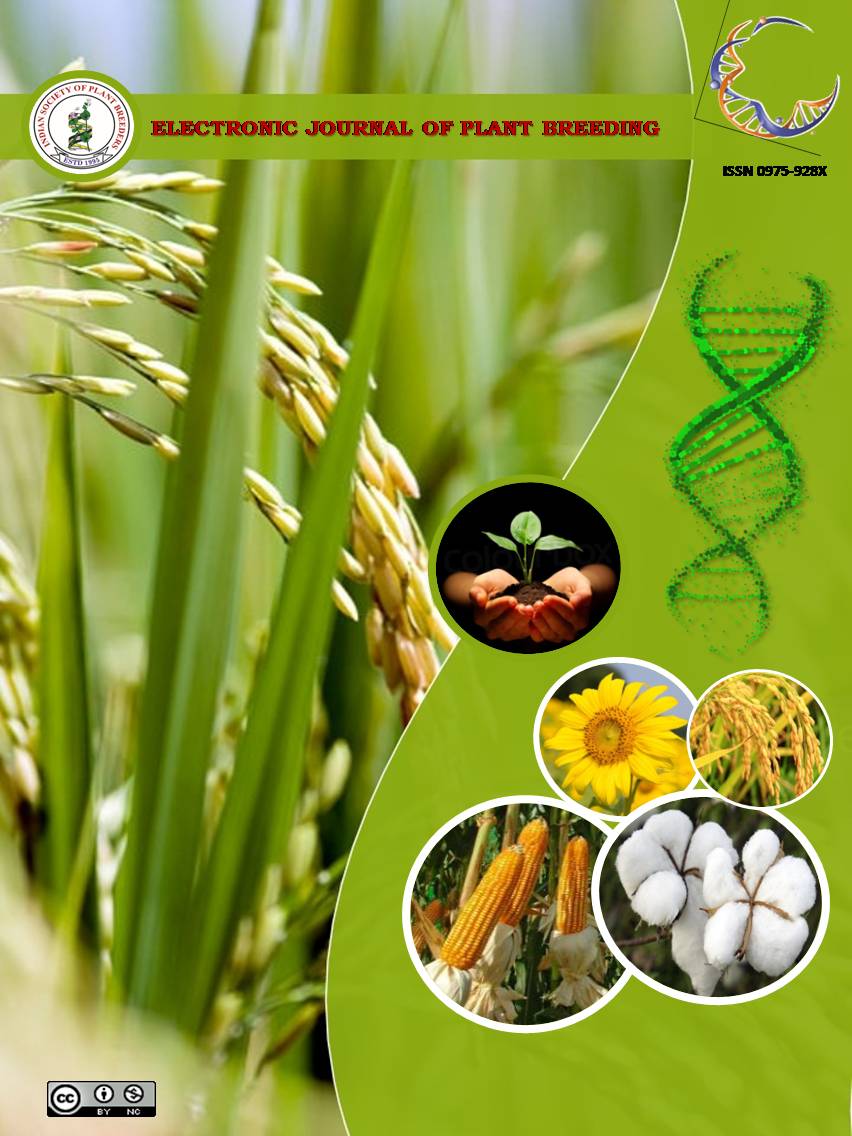Inheritance of some morphological characters in chickpea (Cicer arietinum L.)
Abstract
The present investigation was undertaken to generate information on the inheritance of flower colour, leaflet size and pigmented stem in chickpea (Cicer arietinum L.). Parents, F1’s, and F2’s of crosses Vijay x PKV-4, Digvijay x PKV-4 and BDNG-797 x PKV-4 were evaluated during rabi, 2018-19. The monogenic inheritance was confirmed for two traits, pink vs. white flower colour and pigmented vs. non pigmented stem pigmentation. Leaflet size, small vs. broad was controlled by duplicate gene action. The genetic inheritance of these morphological traits is essential for the selection of superior and desirable transgressive segregants for the genetic improvement of the crop. These results are of essential significance because these traits are used as visual markers in chickpea breeding for early recognition of the hybrid nature of plants

